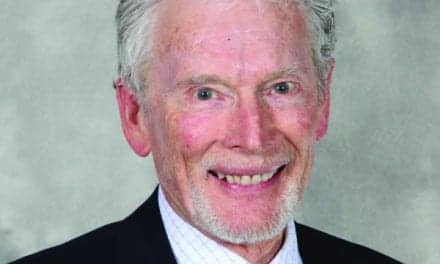Qing Yin Zheng, MD, assistant professor of otolaryngology-head and neck surgery and genetics at the Case Western Reserve University School of Medicine, Cleveland, and member of the Case Comprehensive Cancer Center, has been awarded a 5-year, $1.66 million grant from the National Institutes of Health (NIH) Research Project Grant Program (R01) to explore the impact of several molecular pathways on inner ear dysfunction in Usher syndrome (USH).
USH is a clinically and genetically heterogeneous disorder characterized by congenital deafness and retinitis pigmentosa. It is the most common cause of deafness accompanied by blindness. There are some10,000 to 15,000 people with Usher syndrome in the United States today, and it accounts for 6% of the congenitally deaf population and more than 50% of the deaf-blind population. While there is currently no medical treatment for Usher syndrome, cochlear implants have been found to be very affective in patients with severe or profound hearing loss.
“Many USH patients benefit from cochlear implants, but preservation and a minimal density of spiral ganglion cells are required for an effective implant,” Zheng says.
Spiral ganglion cells are the cells that provide the sense of hearing by sending sound waves from the cochlea to the brain. Zheng says he believes residual hair cells in the cochlea could promote the survival of the spiral ganglion neurons by release of neurotrophic substances or growth factors, and as a result he is particularly interested in the discovery of therapeutic targets that prevent hair cell death, as this is the key to helping Usher 1 patients to respond to cochlear implants and other treatment options successfully.
“Hair cell replacement or regeneration therapies have not really solved the deafness problem of ear diseases,” Zheng says. “An alternative to replacing lost hair cells is to prevent their loss in the first place.”
This is Zheng’s fourth NIH grant for research involving auditory disease, with accumulated $4 million funding.
James Arnold, MD, Julius McCall professor and chair of the Department of Otolaryngology – Head and Neck Surgery at Case Western Reserve University School of Medicine, says Zheng’s clear translational goal, the expertise of his research team, and a very strong publication record promises the potential to uncover new therapeutic approaches to treat hearing loss in Usher syndrome.
Zheng aims to: 1) identify the mutation in and characterize a new mouse deafness model (for Usher 1 syndrome and presbycusis or age-related hearing loss) that provides an ideal window of time for evaluating drug therapy; 2) identify key molecules and mechanisms that lead to hair cell death and hearing loss in the models for the Usher 1 syndrome; and 3) prove the concept that genetic hearing loss and hair cell death can be prevented by otoprotection therapy.
In Usher syndrome type 1 (US1), people are born nearly deaf. Eyesight usually begins degrading around the age of 5 to 10, beginning with night blindness. Generally night blindness precedes tunnel vision by years or even decades. The duration of becoming legally blind spans from as early as childhood to as late as the 40’s. People with US1 also struggle with balance or homeostasis, which is the biological balance within the human body. Because of the balance problems, children with US1 are slow to sit without support and rarely learn to walk before they are 18 months old.
In Usher syndrome type 2 (US2), people are born with moderate to severe hearing impairment and normal balance. Although the severity of hearing impairment varies, most of these children perform well in regular classrooms and can benefit from hearing aids. Retinitis pigmentosa, which is a degeneration of the retina (the part of the eye that receives images of objects), is characterized by blind spots that begin to appear shortly after the teenage years. The visual problems in US2 tend to progress more slowly than the visual problems in US1.
In Usher syndrome type 3 (US3), hearing loss and vision loss due to RP are progressive.
[Source: Case Western Reserve University]




